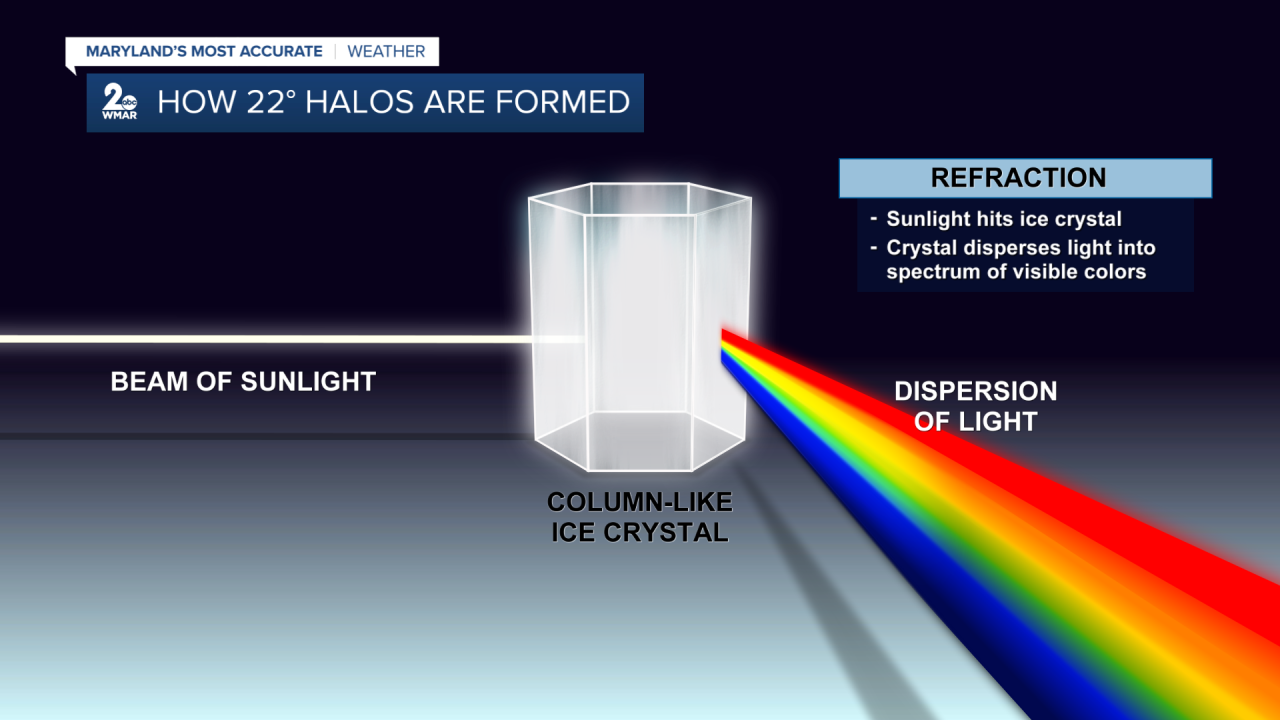
Shawn Stepner sent our weather team this photo last weekend. It is a great example of a 22° halo. Maybe you saw it too! Ice high up in the sky can do some crazy things with light from the sun and moon. Here is how a 22° halo can form.
It gets very cold high up in the atmosphere. In some cases, it can be -60°F! Certainly cold enough to freeze any moisture that might be up there. These ice crystals can form cirrus clouds. These are the wispy clouds that look like a horses mane. You can see them in Shawn's picture above.

When this ice forms it can take the shape of a hexagon. This acts as a prism that can break up light into a spectrum.

This is called refraction.
When that ice lines up perfectly it can form a faint "rainbow" in a ring around the sun.

So next time you notice these high level clouds keep an eye out for the halo to form. Never look directly into the sun though!


